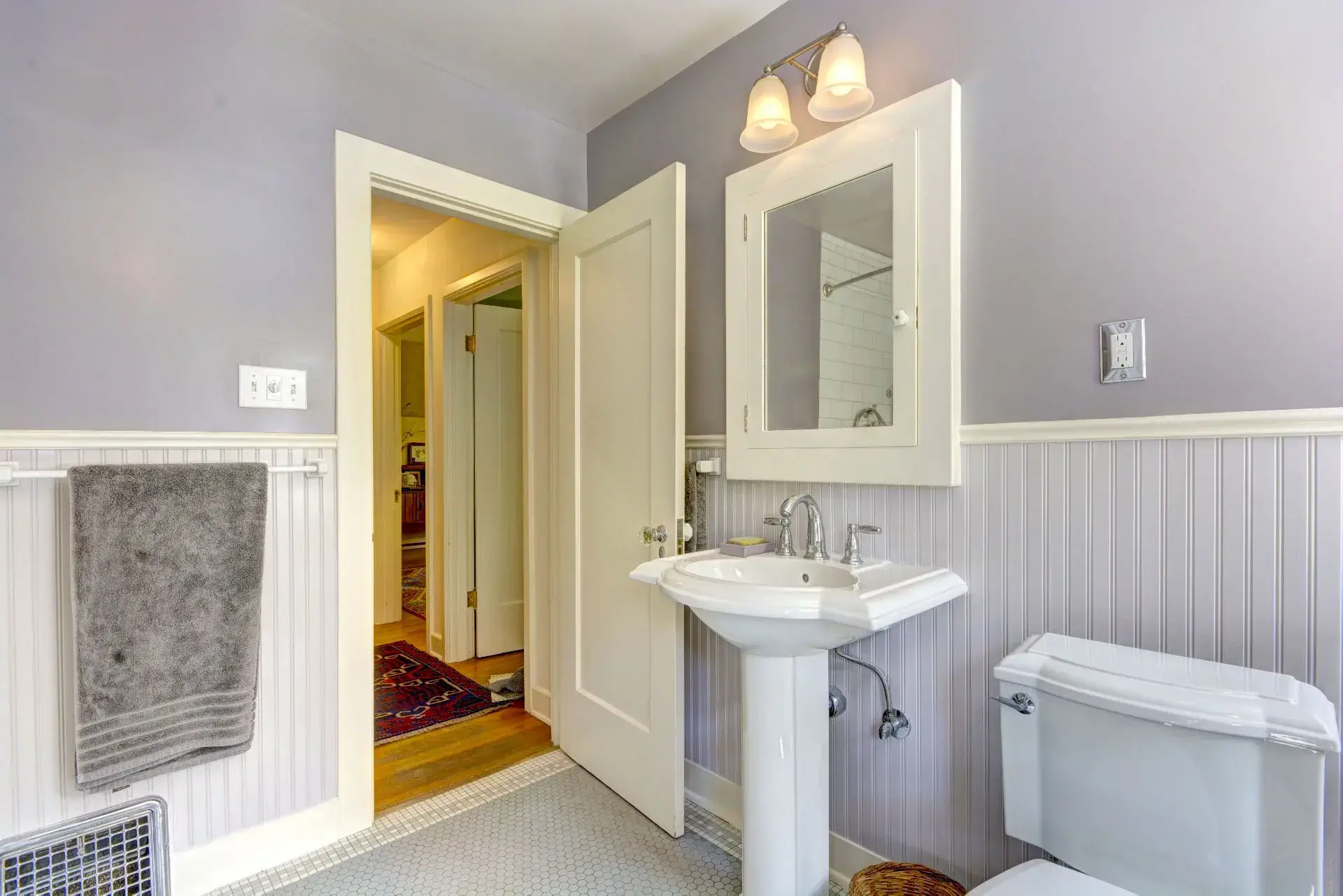When it comes to wood paneling, one size does not fit all. One of the biggest questions we get on the topic is “what’s the difference between wainscoting vs beadboard?” To help clear up the confusion, here’s a breakdown of each, as well as a few other types of paneling.
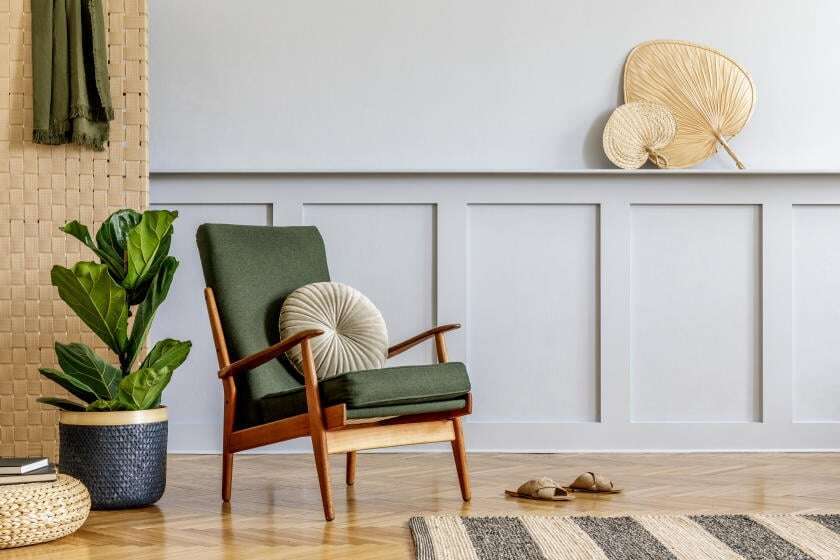
If you use the terms wainscoting and beadboard interchangeably, you’re not alone. But they do have some important differences.
Wainscoting
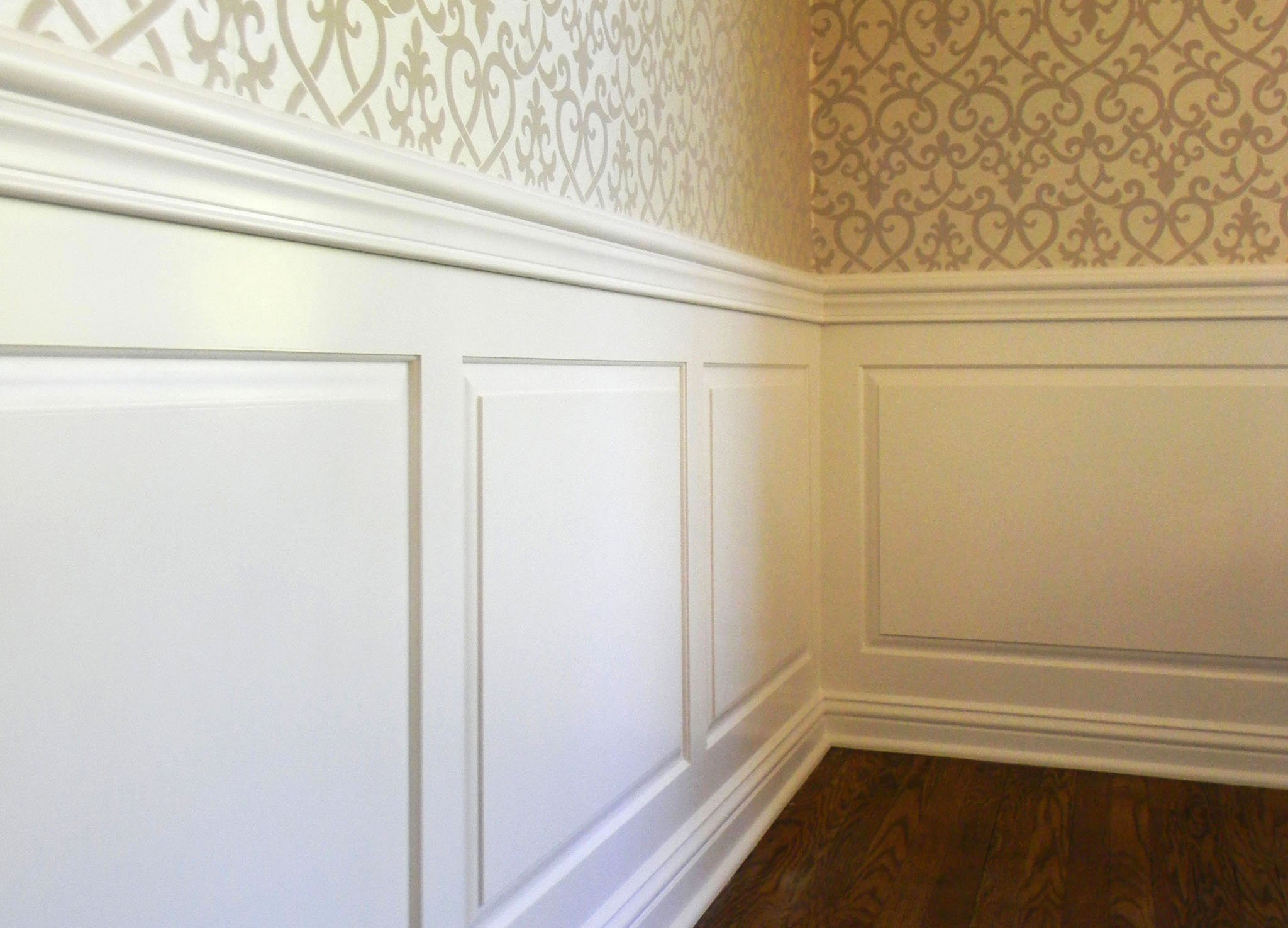
The term wainscoting actually refers to a style of paneling rather than a specific material. Typically made of wood, it’s paneling that covers the lower third or half of a wall in a room to help prevent damage, to cover up damage, aid with soundproofing, or simply as a decorative addition. In addition to wood wainscoting, tile and vinyl options are available. Wainscoting itself is commonly built using beadboard, with a strip of chair rail on top to create a cap.
Beadboard
Now on to beadboard. This is made up of narrow pieces of wood planks aligned vertically on the wall. A ridge or indentation lies between each strip — this is the “bead.” Generally, beadboard ranges in height from 30-54 inches. It can be purchased in panels as long as 8 linear feet to speed up the installation process.
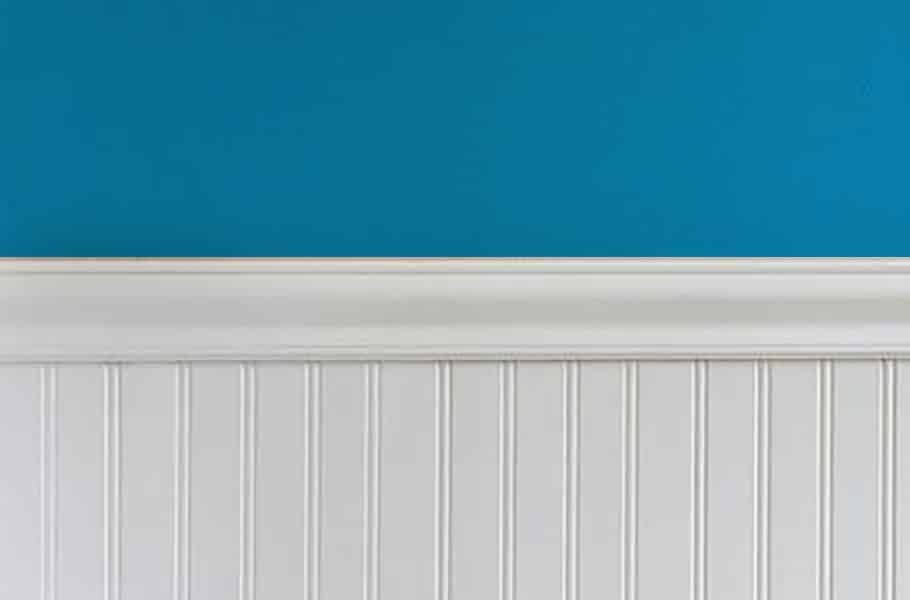
You can find beadboard wainscoting most commonly in dining rooms as it can help protect the lower half of walls against damage from things like bumps from chairs. As a basic rule of thumb, the beadboard should take up about one-third of the wall’s complete height.
Other types of wood paneling
Shiplap
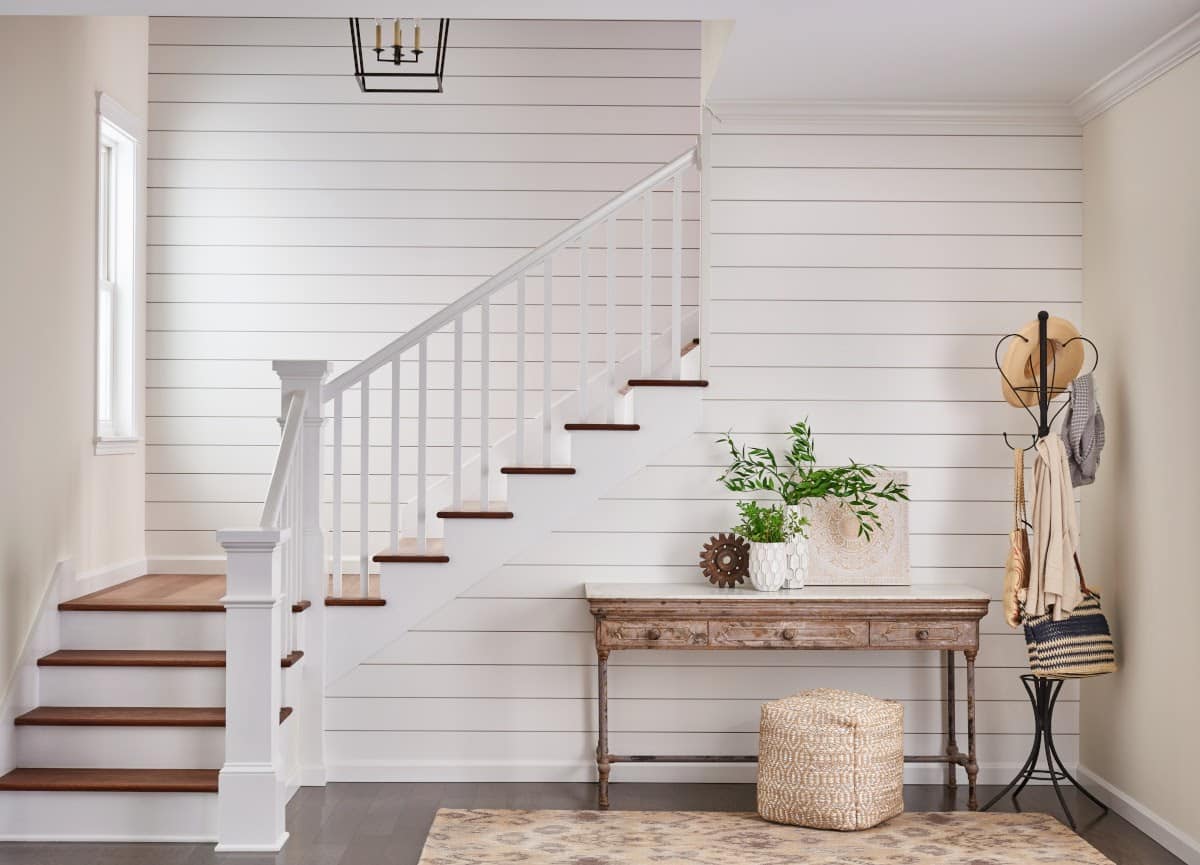
Based on a kind of exterior home siding, shiplap panels are long strips that overlap each other horizontally. Just like with siding, the upper strip goes slightly over the top of the one below it. The effect is a rustic sort of look that can work well in traditional farmhouse-style homes or as an accent wall in more contemporary styles.
Raised panels
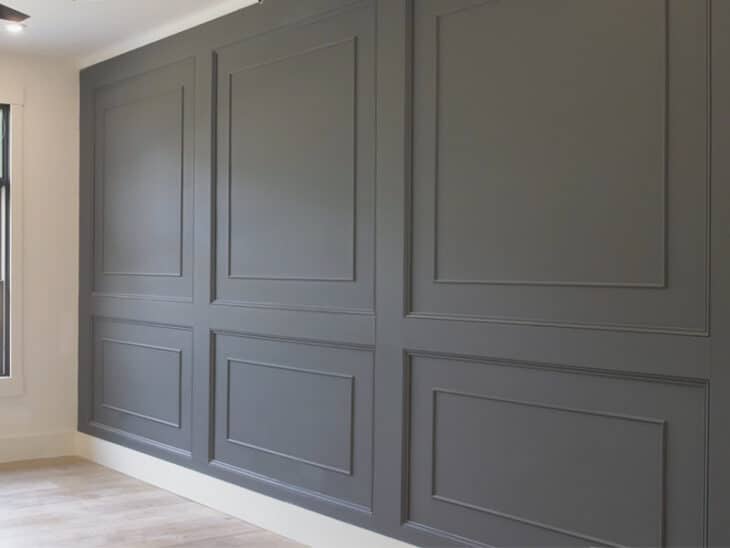
This decorative type of wood paneling is characterized by repeating square or rectangular panels with molding applied to them, resembling empty picture frames. The panels typically have deep bevels between them and are capped by horizontal rails.
These are most commonly found in more formal, ornate rooms and can lend an air of sophistication to a space. The raised elements add both a decorative touch as well as more dimensionality to a room. These can be used as part of a wainscoting feature.
Board and Batten
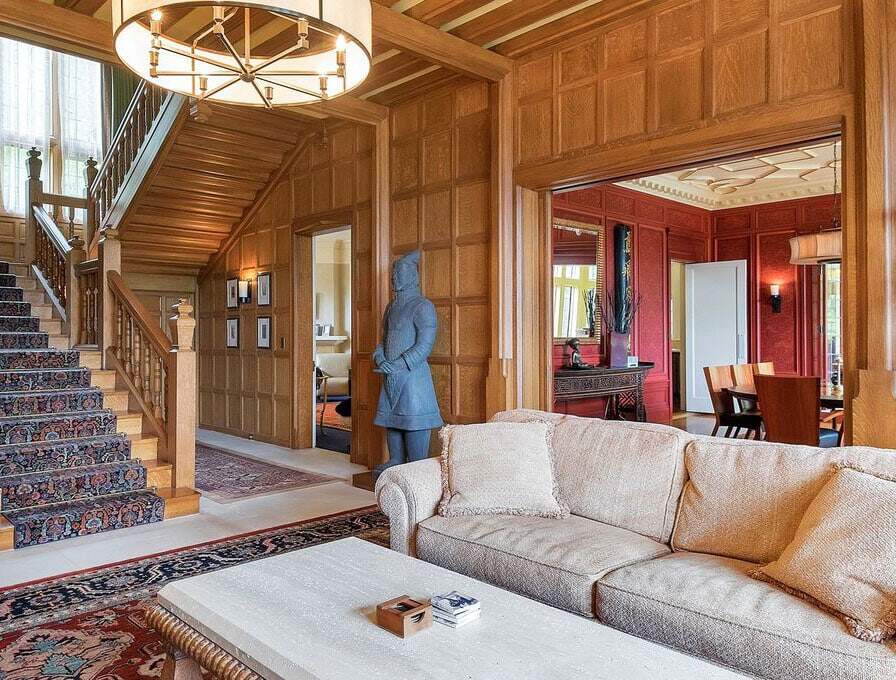
Popular in stately homes more than 100 years ago, board and batten creates a distinctive geometric wood paneling style. The battens are vertical molding boards generally 4 to 6 inches wide. They’re placed on the boards –or wide planks of wood on the wall — and spaced evenly apart to create the appearance of slightly sunken squares or rectangles. Apart from adding visual interest, the battens also serve to cover the seams between the boards.
